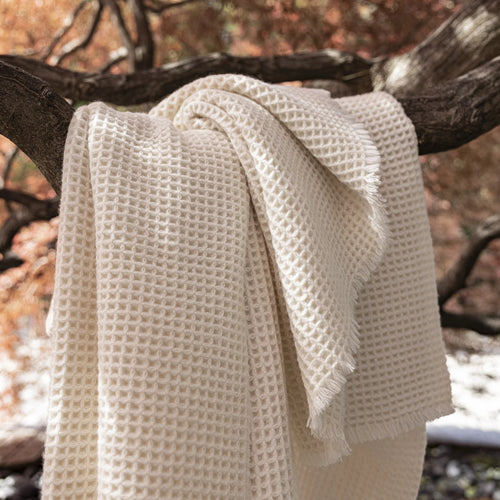Nourishing Winter Recipes: The Importance of Eating Seasonally
What is seasonal eating?
With each change of season, we embrace the shifts in daylight and temperature. However, the changes that our bodies sense are both more subtle and more profound as we subliminally respond to a season by nourishing our bodies in harmony with the cycles of nature.
Eating seasonally is an ancient wisdom that guides us to consume what is naturally abundant or what is necessary for our survival. Seasonal foods, grown and harvested in their indigenous timeframe, offer the nutrients our bodies need to adapt to the current climate.
Why is it important?
In the heart of winter, we naturally gravitate towards warm, hearty dishes like soups and stews, which provide comfort and warmth as well as sustainable energy for staying warm such as dried pulses, nuts, fruits, and meats. By eating seasonally, we not only support our physical health but also connect more deeply with the rhythm of the natural world, fostering a sense of balance and well-being.
Discover a favorite winter recipe of ours—Spicy Chicken and Cabbage Soup from one of our favorite chef, Yotam Ottolenghi—as well as clean condiments and consciously made cookware that align seamlessly with the ethos of seasonal sustenance, bringing a wholesome and balanced approach to everyday living.
Our Go-To, Nourishing Seasonal Recipes
Lentils with Roast Butternut Squash and Feta Yoghurt

"It’s easy to think that any dish that involves roasting veg will inevitably take a fair bit of time. Butternut squash, however, particularly when sliced thin, is surprisingly quick. Keep the peel on, though: without it, the squash will collapse, plus it’s lovely to eat once roasted. All the elements can be made ahead of time, ready to put together in a minute."
INGREDIENTS
1 small butternut squash, halved lengthways, seeds removed, flesh and skin cut into ½cm-thick slices (650g)
3 tbsp olive oil, plus extra to serve
Fine sea salt and black pepper
1 tsp maple syrup (optional)
1 onion, peeled, halved and finely chopped (180g)
The seeds of 5 cardamom pods, finely crushed in a mortar; discard the empty pods
2 garlic cloves, peeled and crushed
1 tbsp tomato paste
¼ tsp ground turmeric
1½ tsp ground cumin
2 x 400g tins beluga lentils, not drained
1 x 400g tin borlotti beans, not drained
70g chopped kale, tough stalks removed and discarded
100g Greek-style yoghurt
200g feta, half broken into 2cm pieces, half finely crumbled
1 lime, half juiced, to get 1 tbsp, the other half cut into 4 wedges, to serve
¼ tsp aleppo chilli flakes
Method
1. Heat the oven to very high – 240C (220C fan)/475F/gas 9. Put the sliced butternut squash, two tablespoons of oil and a half-teaspoon of salt on a large baking sheet lined with greaseproof paper, toss to coat, then roast for 15-20 minutes, until the squash is cooked through and lightly browned. Taste the squash for sweetness, and if necessary season with maple syrup.
2. While the squash is baking, put the onion, ground cardamom seeds, a tablespoon of oil, three-quarters of a teaspoon of salt and a good crack of black pepper in a medium saucepan and cook on a high heat, stirring regularly, for three minutes, until the onions have started to soften and turn slightly golden. Turn down the heat to medium-high, add the garlic, tomato paste, turmeric and cumin, and fry for a minute, just until the spices start to stick to the bottom of the pan. Add the lentils, beans and all the liquid from the three tins, and cook, stirring often, for 15 minutes, until the liquid has thickened and is coating the pulses. Take off the heat and cover to keep warm.
3. Put the kale in a medium bowl, and season with a pinch of salt and a tablespoon of oil.
4. Once the squash is cooked, take it out of the oven and tip into a bowl. Turn down the oven to 220C (200C fan)/425F/gas 7, put the kale on the now-empty tray and roast for seven minutes, until it crisps up. Remove from the oven.
5. Meanwhile, in a bowl, mix the yoghurt, crumbled feta, lime juice and three tablespoons of water until the mix has a spoonable consistency; if need be, loosen with more water, a teaspoon at a time.
Divide the lentil and bean mixture between four bowls (or spread it out on one large platter), then top with the roast squash and kale and the feta pieces. Dollop the feta yoghurt on top, then drizzle over some olive oil. Finish with a sprinkling of chilli flakes and serve with the lime wedges on the side.
Spicy Chicken and Cabbage Soup

"This soup has a real kick, so reduce the amount of chilli if you want to moderate it. I serve it with crisp chicken skin, but that involves a bit of work, so leave it out if you prefer. If you do make the skins, though, bear in mind that some bits will be crispier than others, which is fine; they’ll all taste great."
INGREDIENTS
1 medium chicken (about 1.6kg)
80g ginger, skin on and thinly sliced
2 whole heads garlic, cut in half widthways
2 red chillies, cut in half lengthways, or 1 chilli if you prefer less heat
1 onion, skin on and cut into 4 wedges
8 spring onions, 4 cut in half widthways, the rest thinly sliced at an angle
4 tbsp coriander leaves, plus 20g extra of stalks
5 cinnamon sticks
6 whole star anise
Salt and black pepper
1 small savoy cabbage, cored and thinly shredded (400g net weight)
2 tbsp fish sauce
3-4 limes – 1 cut into 6 wedges, to serve, the rest juiced, to get 3 tbsp
4 tsp white sesame seeds, toasted
1½ tsp chilli flakes, toasted
1 tbsp toasted sesame oil
METHOD
1. Put the chicken breast side up in a large stock pot for which you have a lid, and add the ginger, garlic, chilli, onion, halved spring onions, coriander stalks, whole spices, two teaspoons of salt and a good grind of black pepper. Pour over 2.5 litres water and bring to a boil on a medium-high heat. Turn down the heat to medium-low, cover with a lid and leave to simmer gently for 80 minutes, or until the chicken is very tender. Lift out the chicken and set it to one side. Strain the broth into a large container or bowl, discard the solids, then pour the broth back into the stock pot.
2. Heat the oven to 200C (180C fan)/390F/gas 6. Carefully remove the skin from the breast, legs and back of the chicken – try to lift it off in largish pieces – then, using a butter knife, gently scrape off any fat or sinew that might be attached to the underside of each piece of skin (don’t worry if you can’t get it all off). Pat dry the skin, lay it skin-side down on a large oven tray lined with greaseproof paper and sprinkle with salt and pepper. Cover with another piece of greaseproof paper and a tray of similar size, to weigh it down, then roast for 20 minutes, or until golden and crisp. Remove the top tray and paper and leave to cool for five to 10 minutes, during which time it will crisp up further.
3. Meanwhile, use your hands to pull apart the chicken meat into large shreds, discarding the bones and cartilage as you go. Stir the meat back into the strained stock and bring to a simmer on a medium-high heat. Add the cabbage and simmer for about three minutes, until cooked through but still with a slight bite. Off the heat, stir in the fish sauce and lime juice. Combine the sesame seeds and chilli flakes in a small bowl.
4. To serve, divide the soup between six bowls and top with the sliced spring onion and picked coriander. Drizzle each bowl with half a teaspoon of sesame oil, then spoon over the sesame seed mixture. Break the chicken skin into random pieces and divide between the bowls, and serve with the lime wedges alongside.










